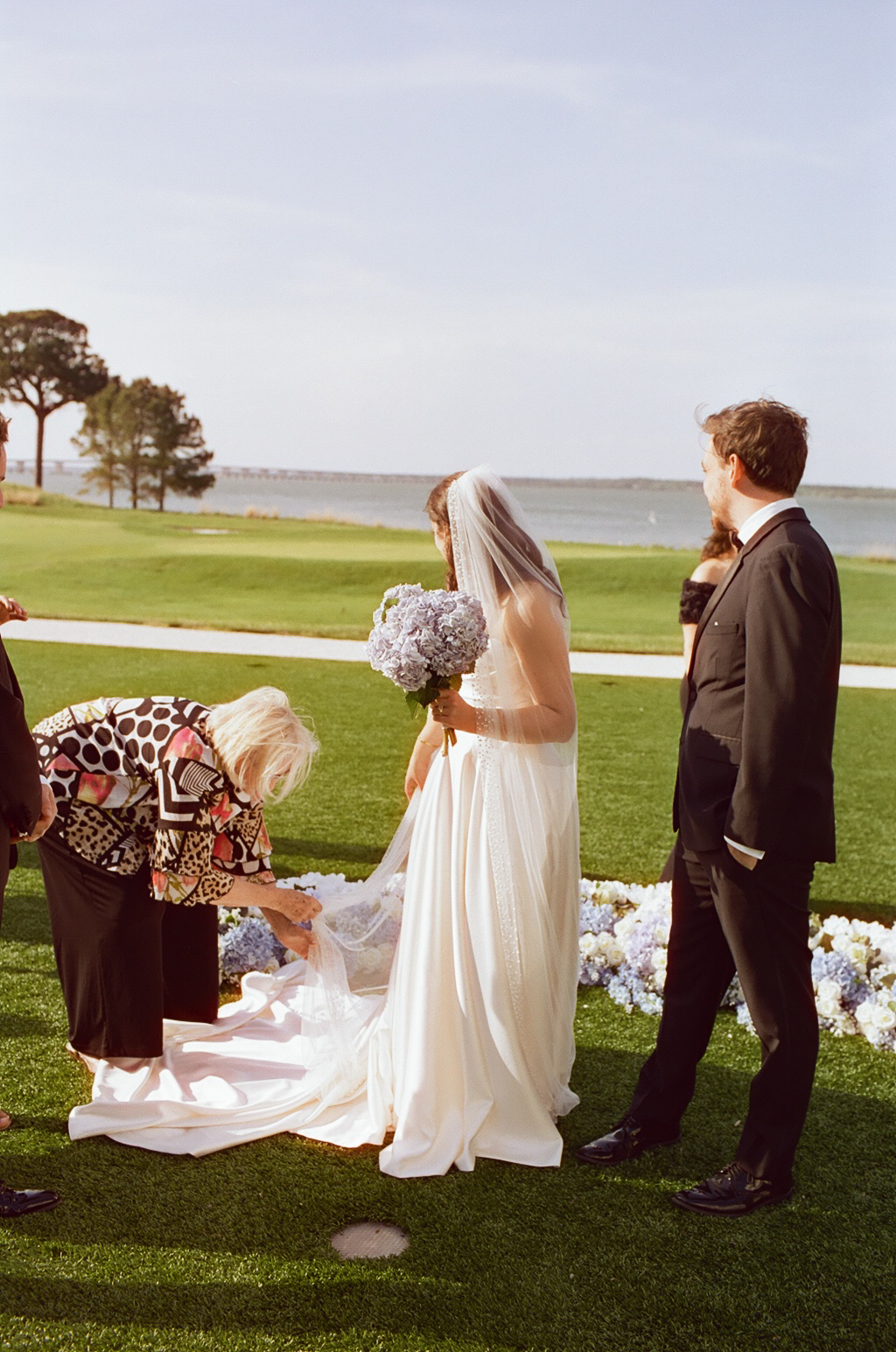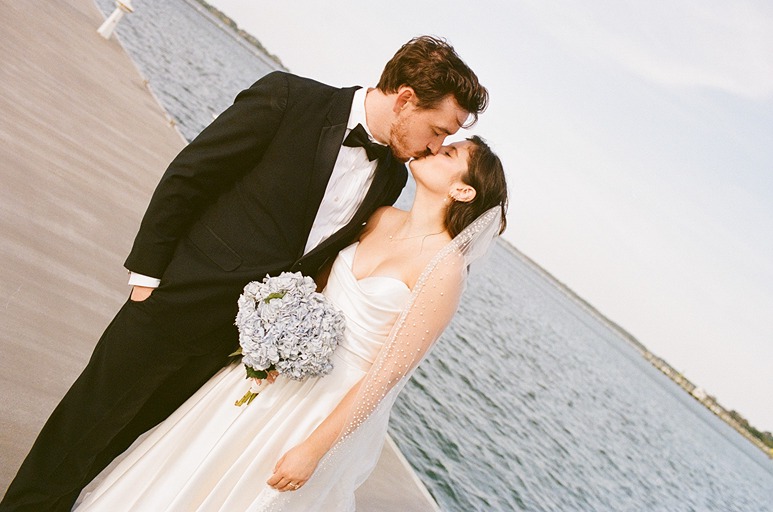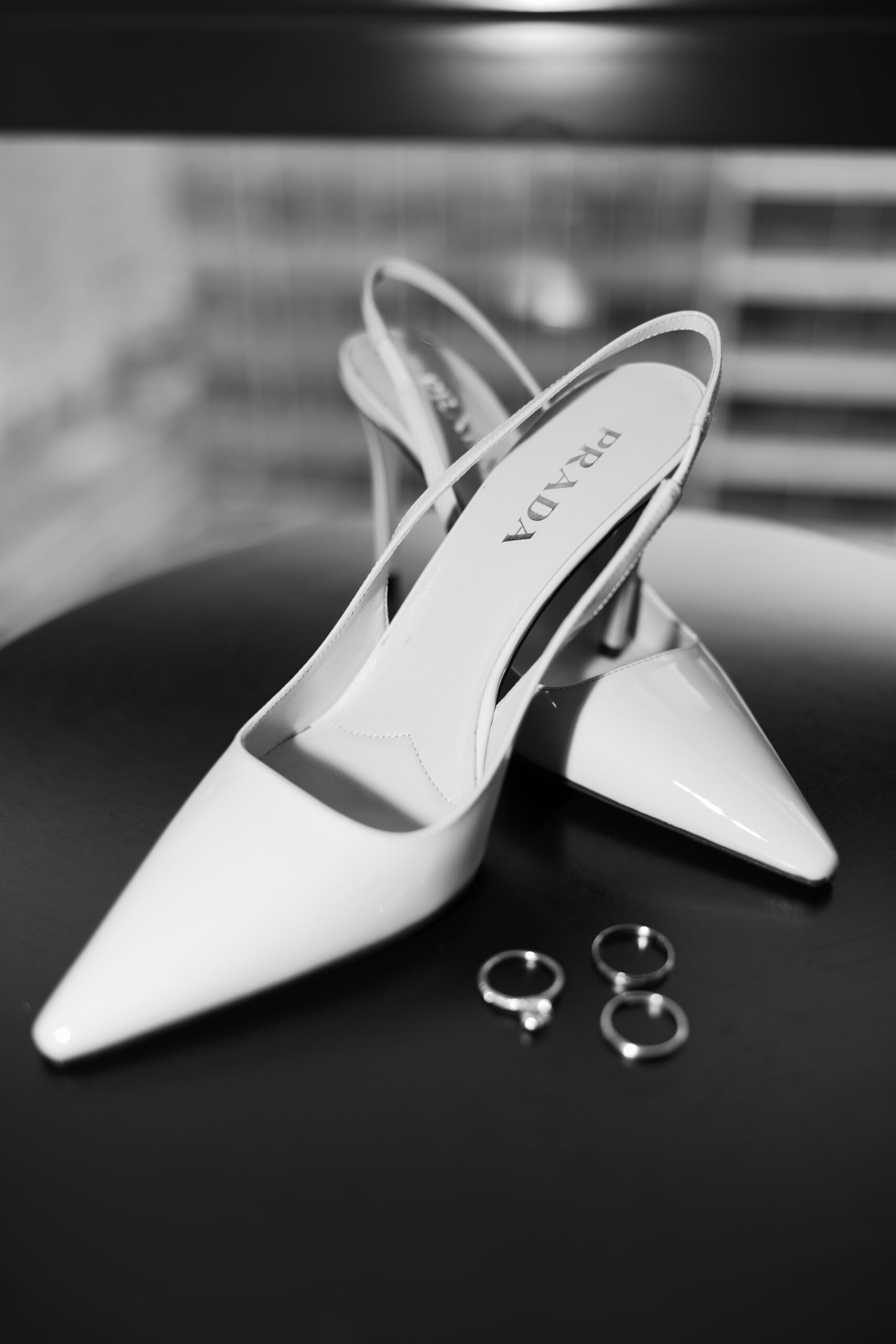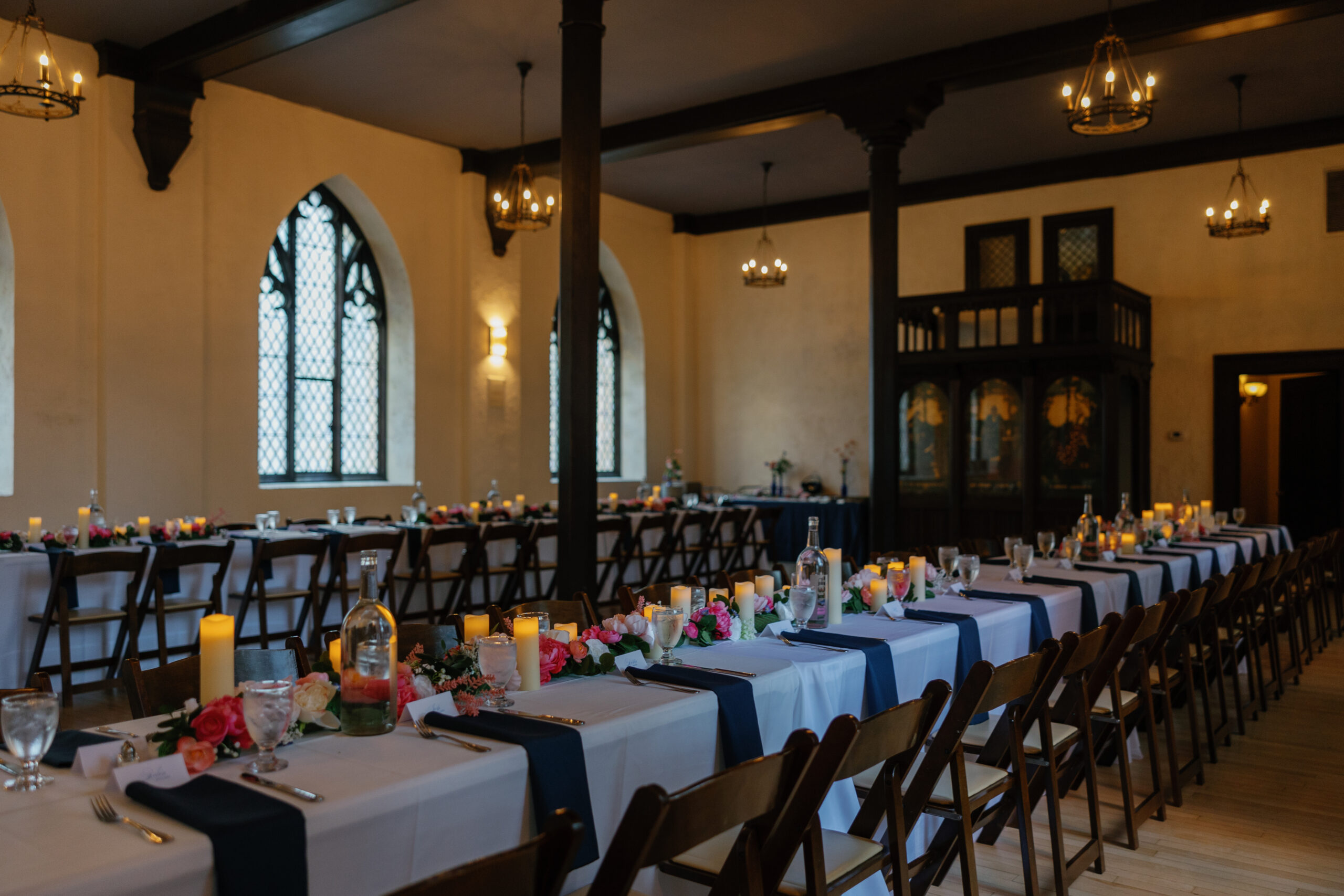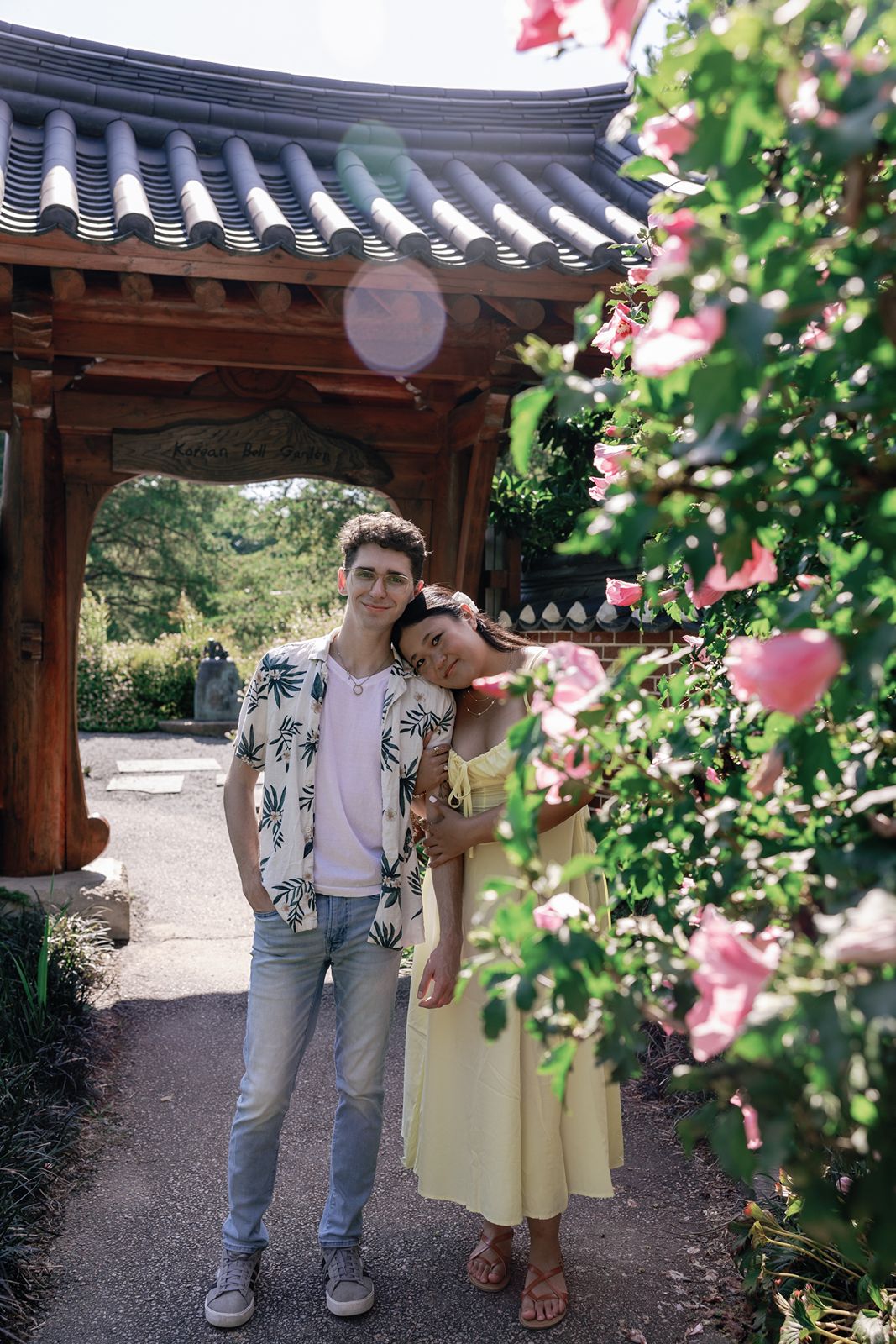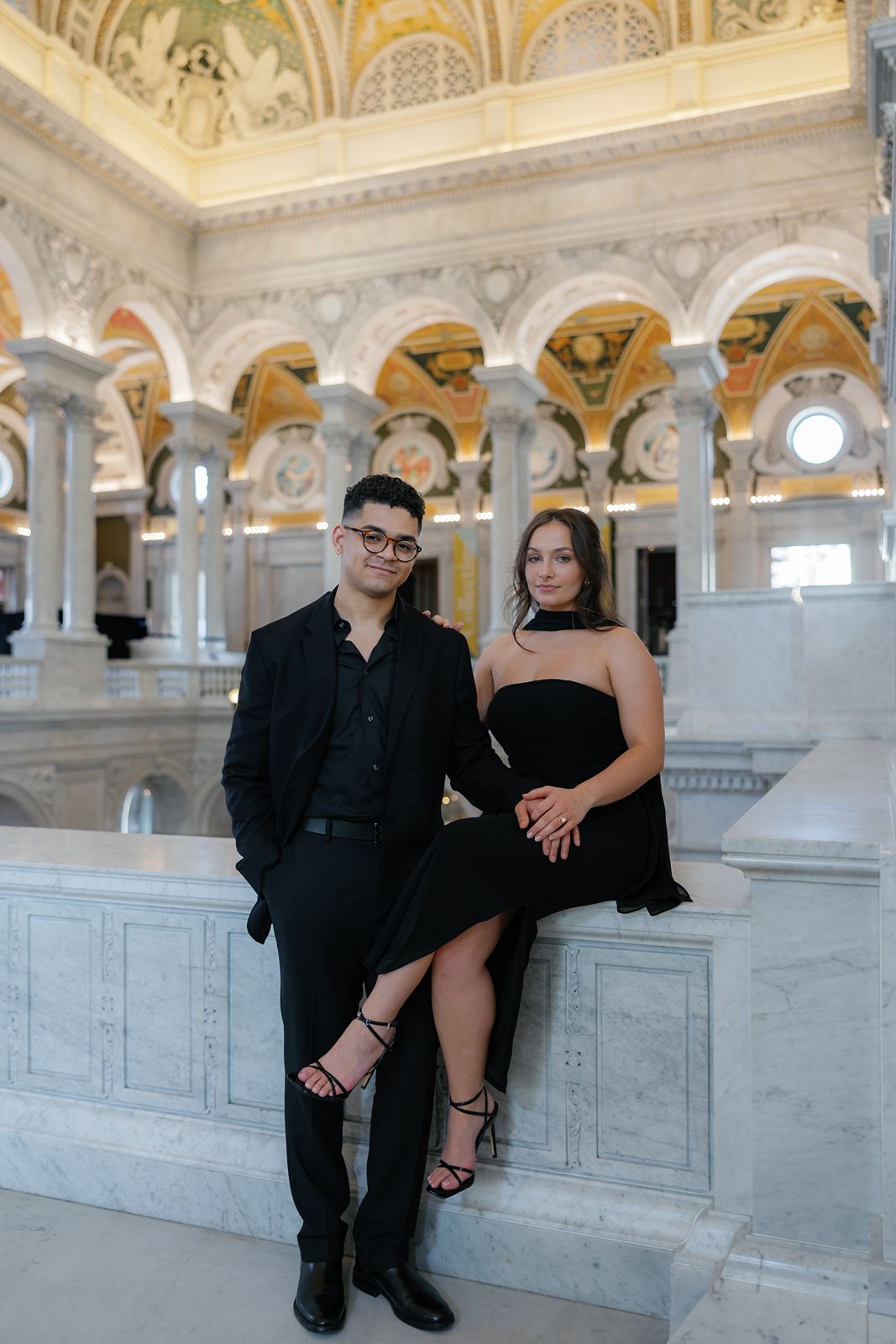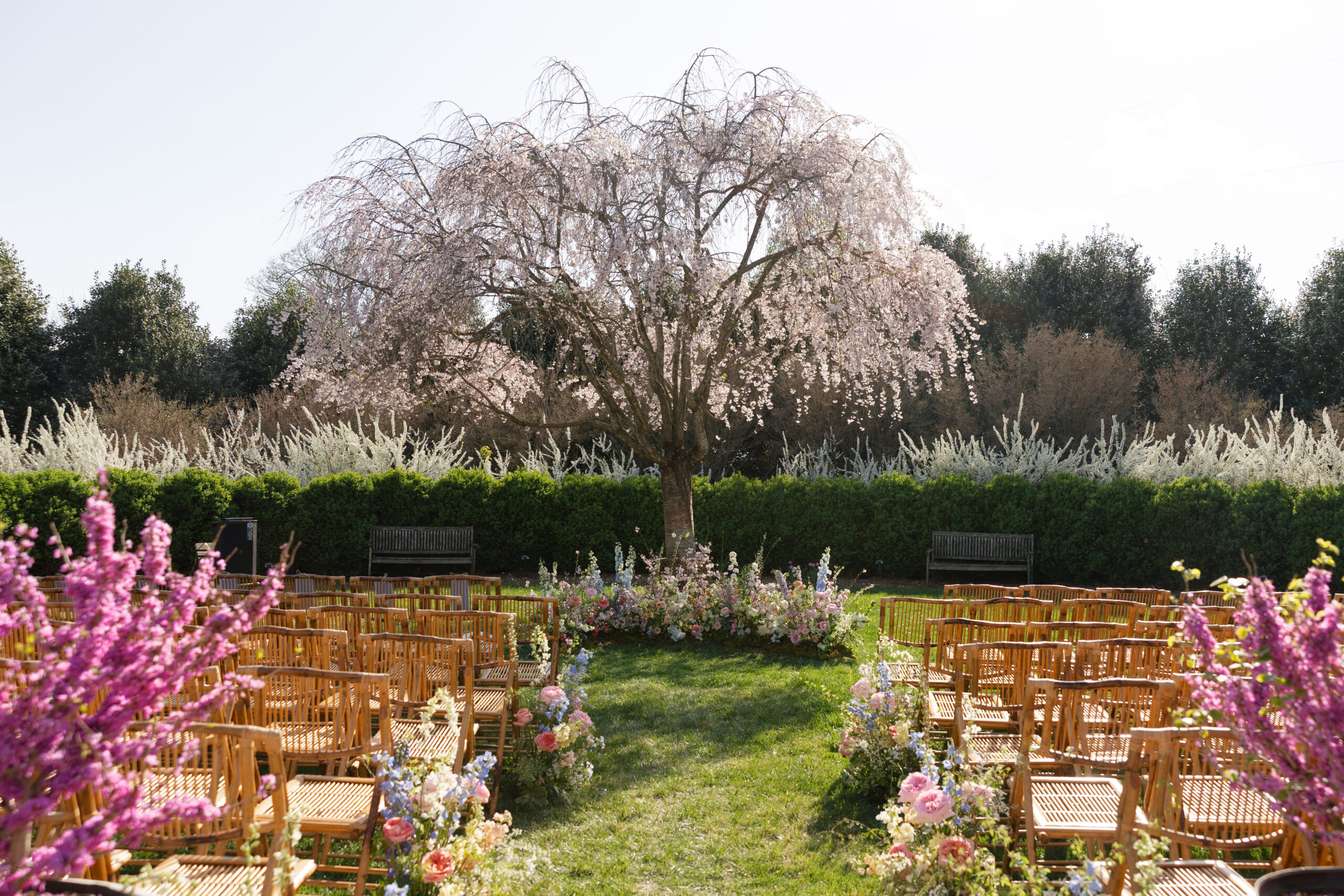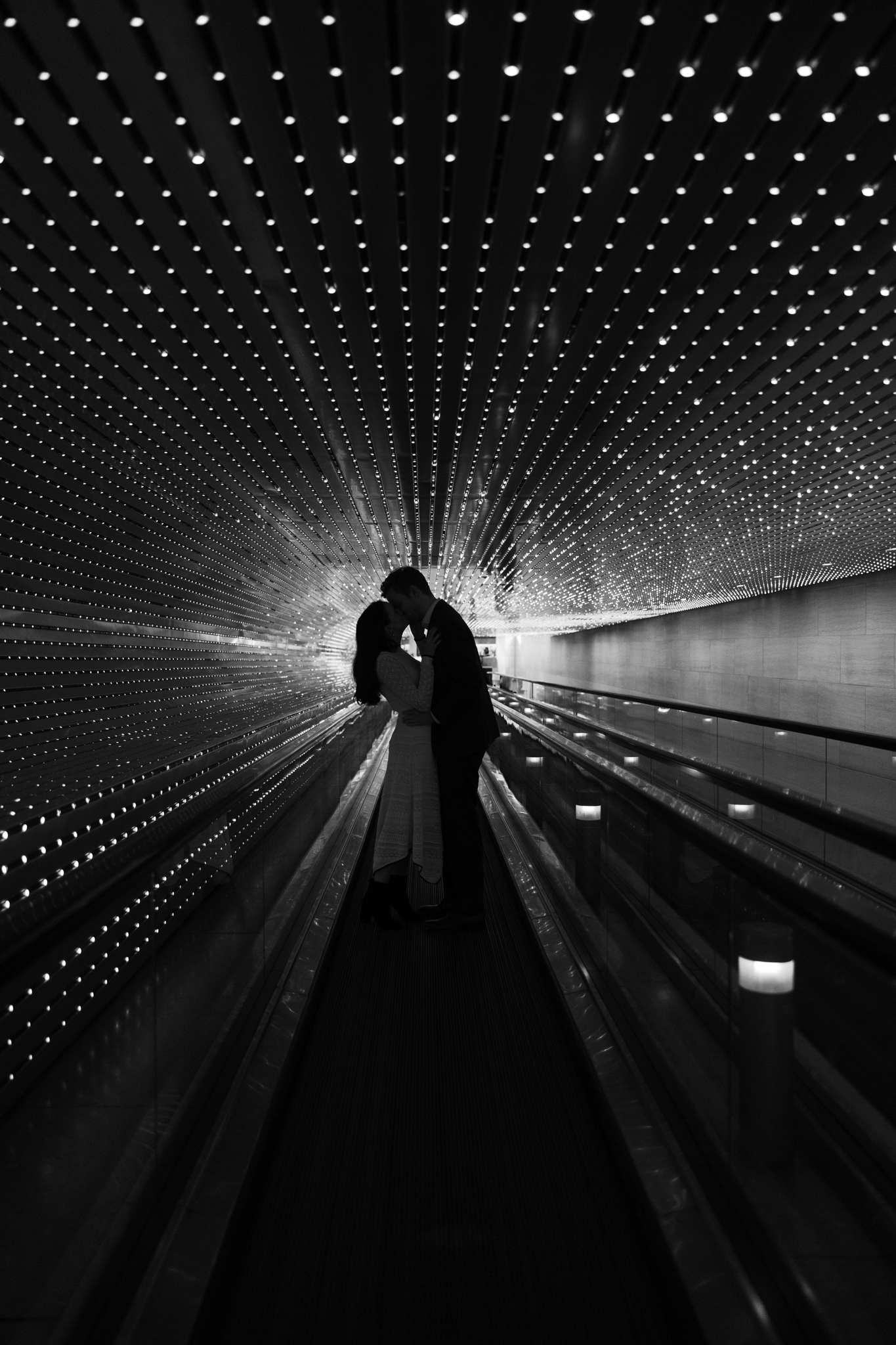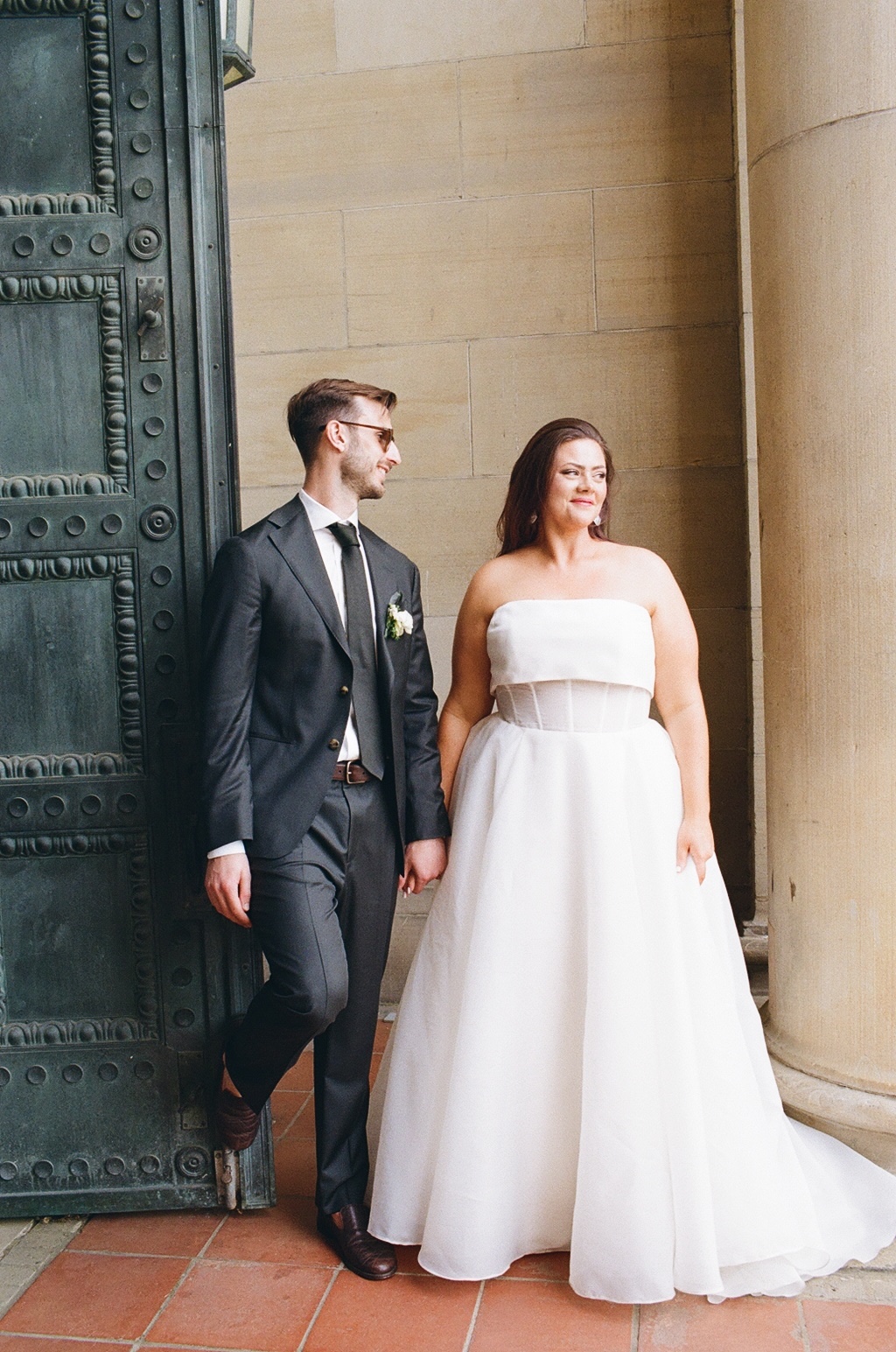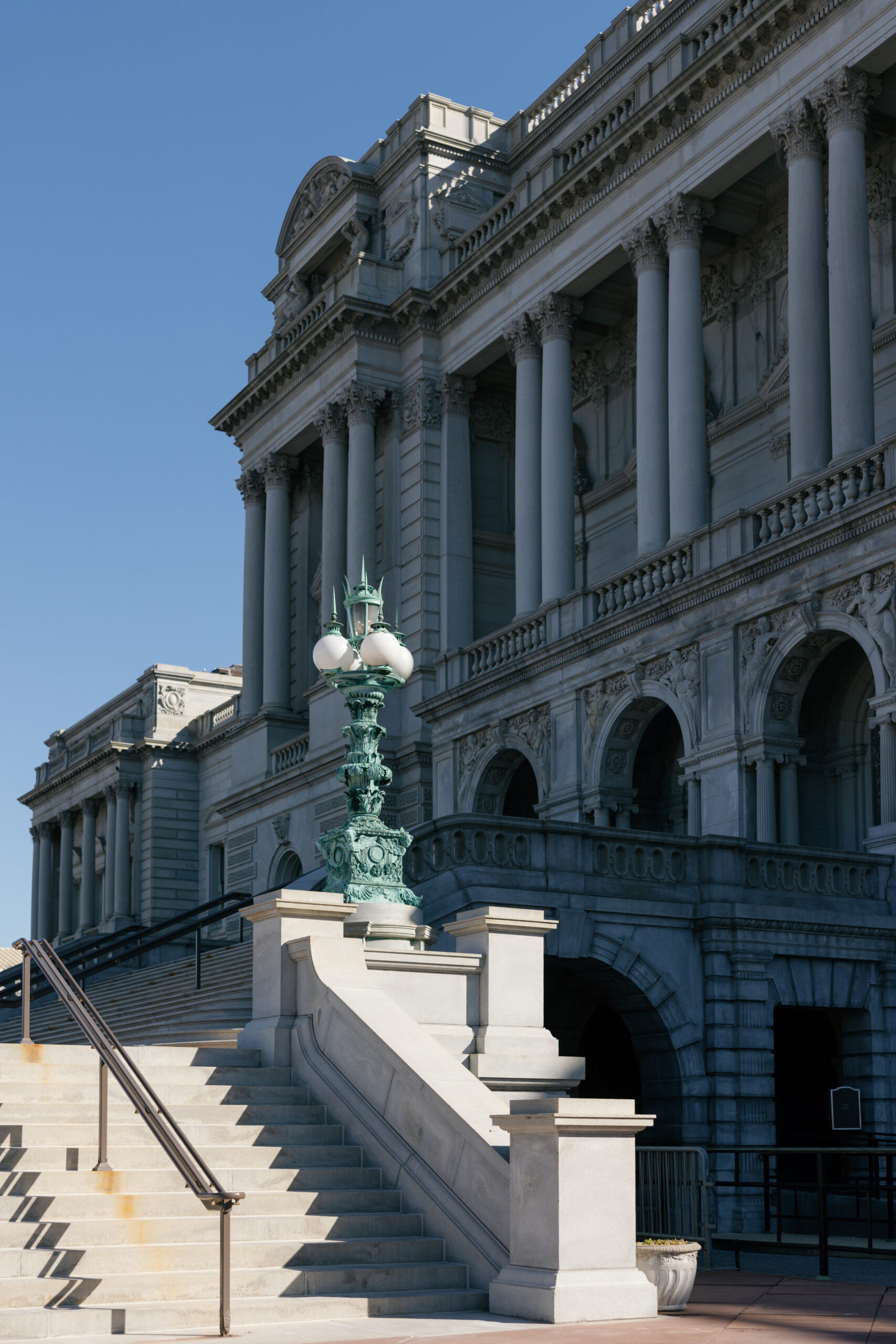Welcome to my blog! I’m Jalisa, a DC and Maryland documentary style wedding photographer dedicated to preserving moments on digital and film. When it comes to film vs digital wedding photography, there’s a sweet spot where both worlds meet – and that’s where I do my best work. Whether through the soft grain of film or the crisp flexibility of digital, I bring a hybrid style to your wedding that tells your story with heart.
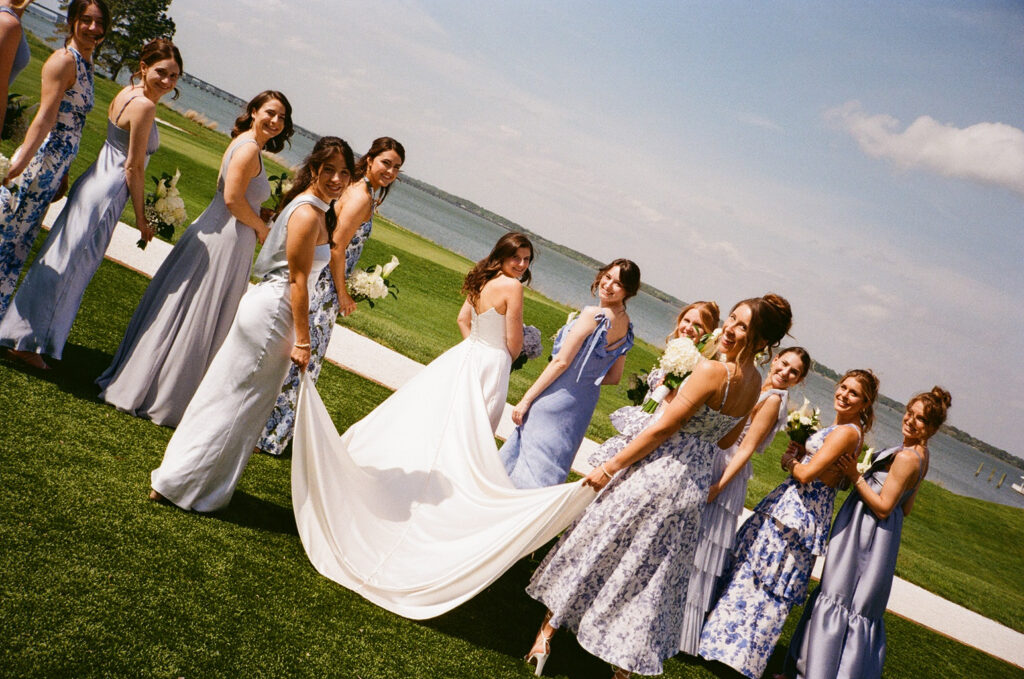
In the conversation around film vs digital photography, the choice often feels like a fork in the road. But for me, it’s a bridge; one that I will cross every single time. A hybrid approach – using both film and digital photography throughout a wedding day – lets me tap into the strengths of both formats and create a gallery that’s not just beautiful, but full of depth, dimension, and authenticity. This is what adds magic to your already special memories.
Understanding the Difference: Film vs Digital Wedding Photography
In 2025, it seems like “film vs digital wedding photography”, either medium, or both, is a question as common as “to be or not to be”…or at least in my circle of wedding photographers it is. So let’s start with the basics here. What does each medium offer that’s so special? Though both serve the same goal of preserving your memories, they each bring a unique aesthetic, workflow, and emotional resonance to your images.
Film Photography
Film offers a romantic glow and nostalgic texture that feels like a memory in physical form. Its natural grain, soft highlight roll‑off, and painterly color palette evoke warmth and timeless elegance. Many clients describe film photos as having a deeper emotional resonance – the kind of image you might find in a treasured heirloom album.
“I just want you to know how OBSESSED I am with the 35mm photos. Insane, so so so amazing and vibey and perfect!“
– Abigail, past bride
Film’s tonal qualities are immediately recognizable – the way light softly wraps around your face, how shadows roll gently instead of harshly, and how colors feel warm, natural, and lived-in. Compared to digital’s crisp sharpness, film’s look can feel more cinematic, more nostalgic – like you’re reliving a moment rather than viewing a technical record. This quality is why so many people are drawn to it when asking about. You can check out some of my personal favorite film photographs here.
While film is my personal favorite, I’ll be the first to say it’s not the write answer to every part of the day. Certain moments demand digital.
Digital Photography
Digital photography really shines when capturing fast-paced, unpredictable moments like laughter, tears, or energy on the dance floor. With its immediate feedback, low‑light responsiveness, and high resolution, digital ensures every fleeting emotion or detail is recorded with clarity. It’s ideal for storytelling through authenticity.
Digital offers a crispness that charges the energy of a room – years after the photo was taken. Digital really shines through for high-energy dance floors, where other unpredictable factors come into play – looking at you disco balls, multi-color DJ lights, and sloshing drinks. This isn’t to say film can’t thrive in this environment, but it creates a very different image at the end of the day.
Film Images
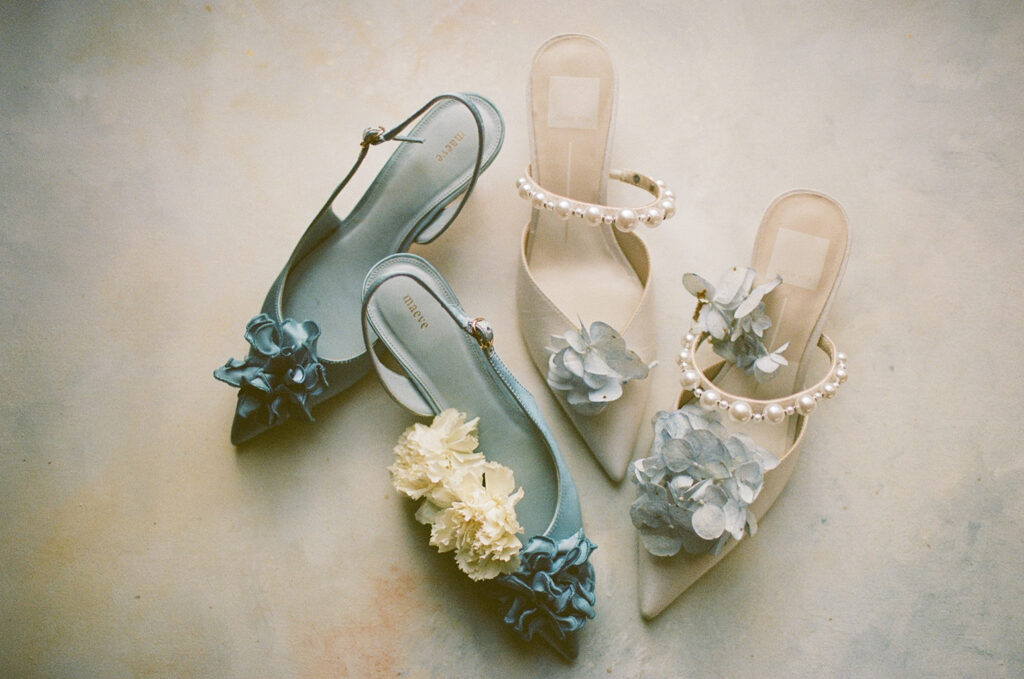
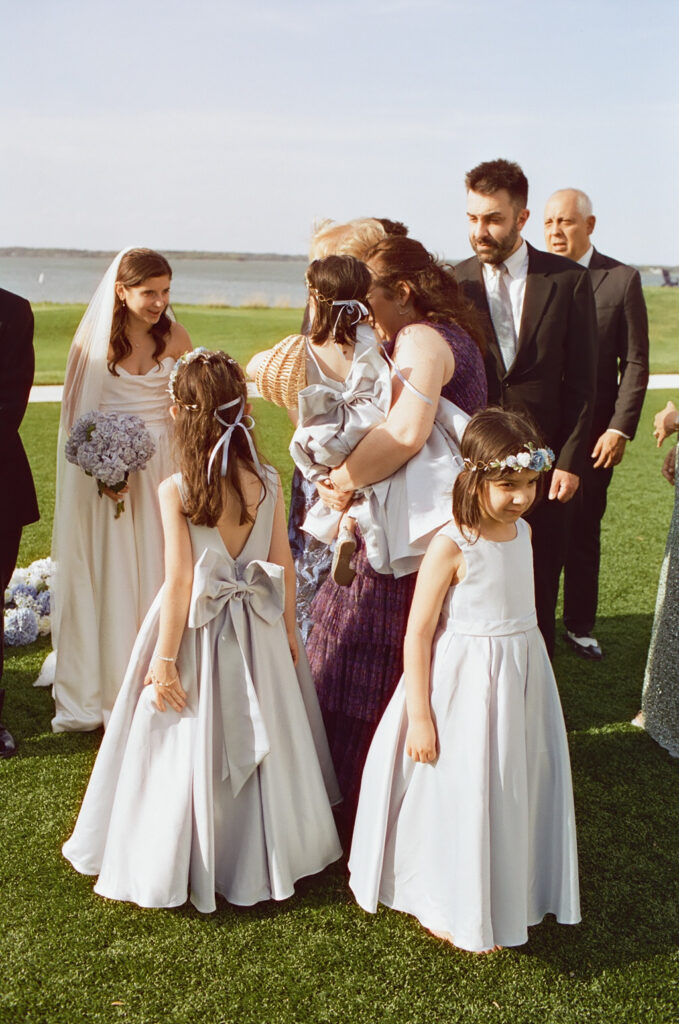
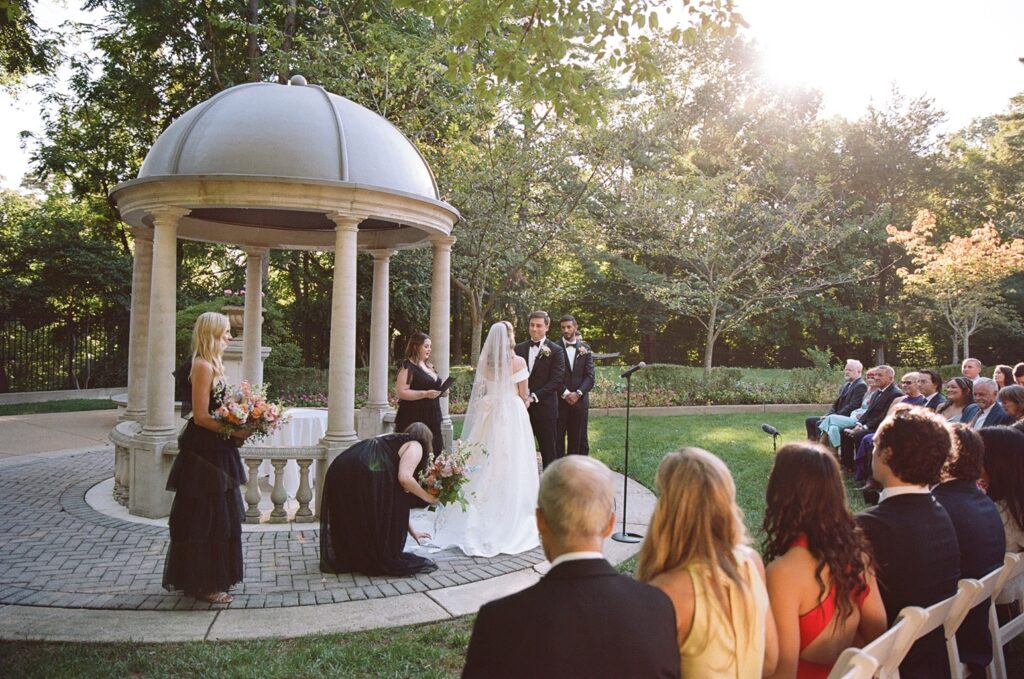
Digital Images
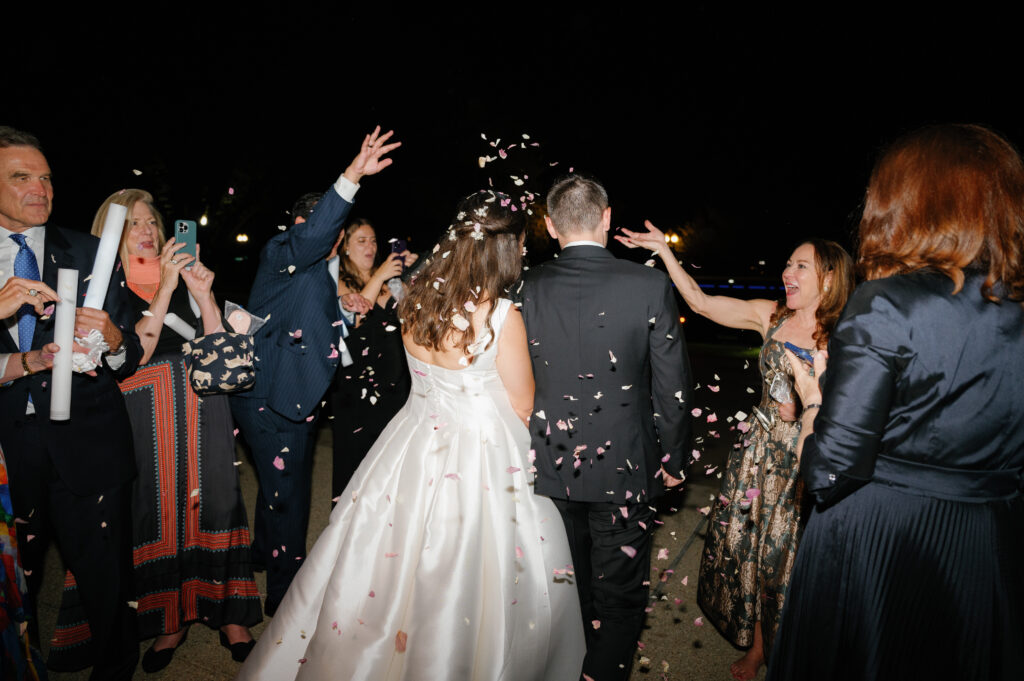
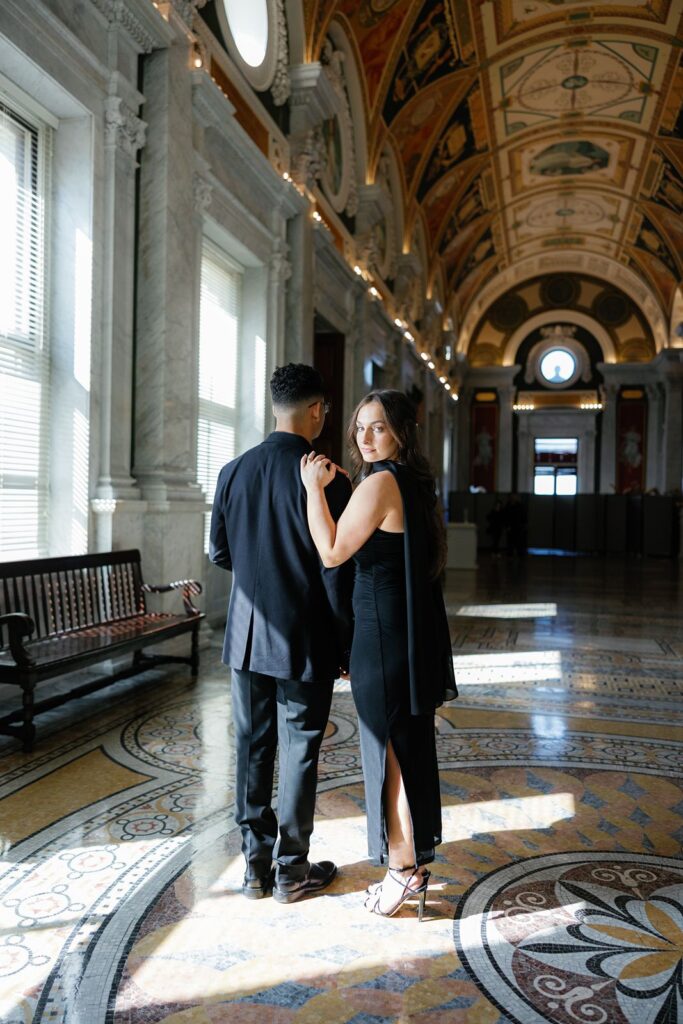
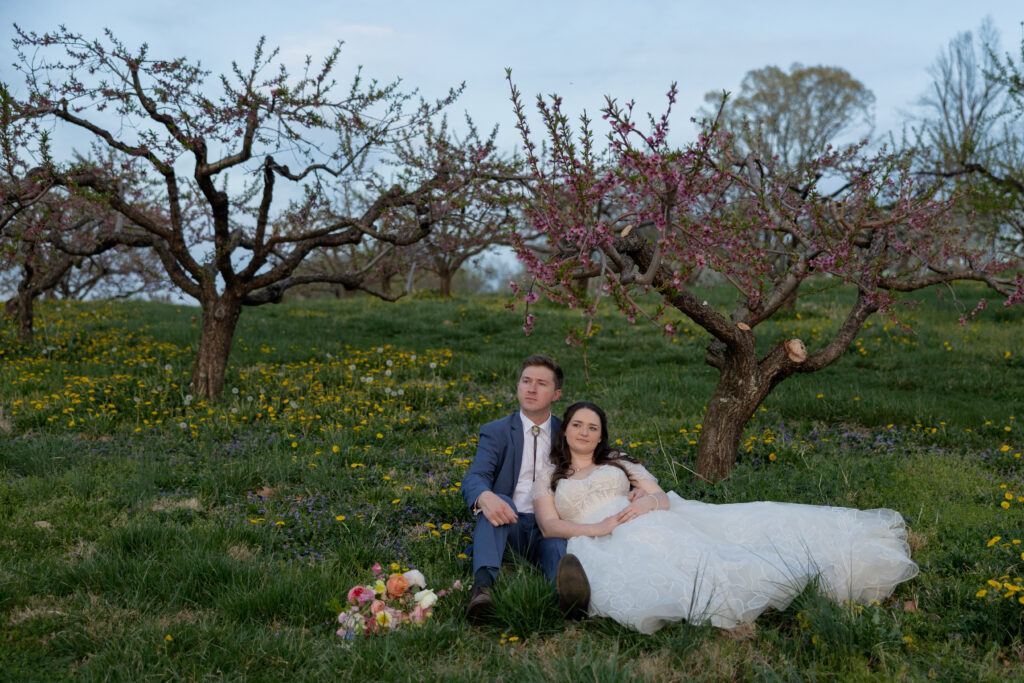
Emotional Storytelling Throughout the Day
Every wedding has an emotional rhythm: anticipation during getting ready, tenderness during vows, unfiltered joy during the reception, tears during the dances. And for every diversely complex emotion, there is an equally demanding mood to preserve – soft light filtering into the getting ready space, glowing sunshine during the ceremony, flickering candlelight during the speeches, or electrifying pulses of light during the reception. Using the right equipment is a critical part in telling your story and carrying the weight of the emotions. The hybrid approach allows me to document not just how the day looked, but how it felt – from still to spontaneous.
Film Storytelling
Film brings a soulful, quiet reverence to moments that feel sacred – like a father seeing his daughter for the first time. Digital captures the electric energy of laughter, dancing, and movement.
Shooting film demands intention – it forces me to slow down, breathe, and connect authentically with you. There’s a meditative quality to each click: understanding light, framing, and emotion before it happens.
Digital Storytelling
Digital gives me a bit more freedom – allowing for plentiful frames that capture spontaneous spontaneity: candid laughter, kids running around, emotional embraces.
Digital can be a bit more carefree as I’m not limited to a set amount of frames per roll of film. For high demand moments (looking you directly in the eye, first kiss!!!), digital will take precedence in ensure the moment isn’t missed.
Visual Depth with a Hybrid Approach
When used in a hybrid sense, digital and film ensures your gallery includes both dreamlike portraits and documentary-rich moments. At the end of the day, I believe your wedding gallery should feel like a story: textured, layered, and emotionally rich. Film adds softness, romance, and an heirloom quality that anchors your photos in timelessness. Digital brings clarity, versatility, and the ability to capture fleeting moments with precision. Together? Balance. Harmony. A bit of surprise. The result is a gallery with visual depth – where each format complements the other and creates contrast that’s intentional and artistic.
Over the years, I’ve fine-tuned my editing to ensure film and digital work together cohesively – so whether a photo was shot on film or with digital gear, the gallery still feels unified.
Practical Considerations when Hiring a Film and Digital Wedding Photographer
Creating a hybrid gallery isn’t just an aesthetic decision – it’s a logistical commitment, and frankly a pretty big one. Using both formats means I:
- Bring two sets of gear: multiple cameras, light meters, and film stocks. Want to know more about the gear I use for both digital and film wedding photography? Read about it here.
- Need to allocate additional time during portraits to shoot in both formats. At the end of the day, this means I need longer hours to fully document your day. Gone are the 6 hour weddings. For a day with details, getting ready, a wedding party, multiple-locations, and full length reception, I recommend consecutive 10 hours.
- Include film processing and scanning in the post-production workflow. Yup – you will get all images delivered in an online, digital gallery. In 2025, most people live online and at least want digital copies of images for easy sharing with remotely located friends and family, simplified backups, and the ability to share them online.
- A second photographer. Both for my sanity, and your gallery. I’ve gone back and forth a lot about having a second photographer – and it really boils down to this: if film is a high priority for you, you need to have a second photographer. Having a trusted professional that I can rely on throughout the day allows me to switch more seamlessly between film and digital. It allows for more comprehensive coverage of all celebration events; the second can cover cocktail hour with guest candids and details while I am doing family portraits, the second can spend the entire morning with the other marrier, the second can play with more creative composition. Adding a second photographer is something you may view as an “unnecessary luxury”, but I promise you, it’s the most beneficial thing you can add on.
All of this demands strong time management and a clear vision for how each part of the day will be captured. For me, this isn’t an afterthought – it’s the foundation of how I serve my clients. My hybrid workflow balances craft with technicality, it grounds me in the moment and forces emotions to the foreground.
Personal Reflection: Why I am a Film and Digital Photographer
It’s where my photography journey began. I started with a film darkroom class my senior year of college, expecting it to be an easy A that I would enjoy. I most certainly enjoyed it – but it was anything by easy. That class took every bit of my time between seeking out the perfect object to photograph (we were only allotted three 24-frame rolls of HP5 for the entire semester), developing the negatives, and then printing our best images for gallery review. I fell in love with the process. Today, I don’t develop or scan my on film in house anymore, but I still savor the process – and the results – of working with film.
Film, especially when used artistically and thoughtfully on a wedding day, also introduces a sense of humanity that digital can erase. With digital, it’s so easy for every image to be crisp, bright, and edited to perfection. The very nature of film demands honest documentation at it’s core. I love seeing the flaws – light leaks, dust specks, objects forgotten in the background, a slightly skewed horizon line. It’s a permanent reminded that these are real images, taken of real people and moments, by a real person.
Why do I blend them? Because I believe your wedding deserves both — the poetry of film, and the dependability of digital. Because some moments deserve glow, and some deserve grit. And together, they remind me that every wedding is worth doing justice to in every way possible.
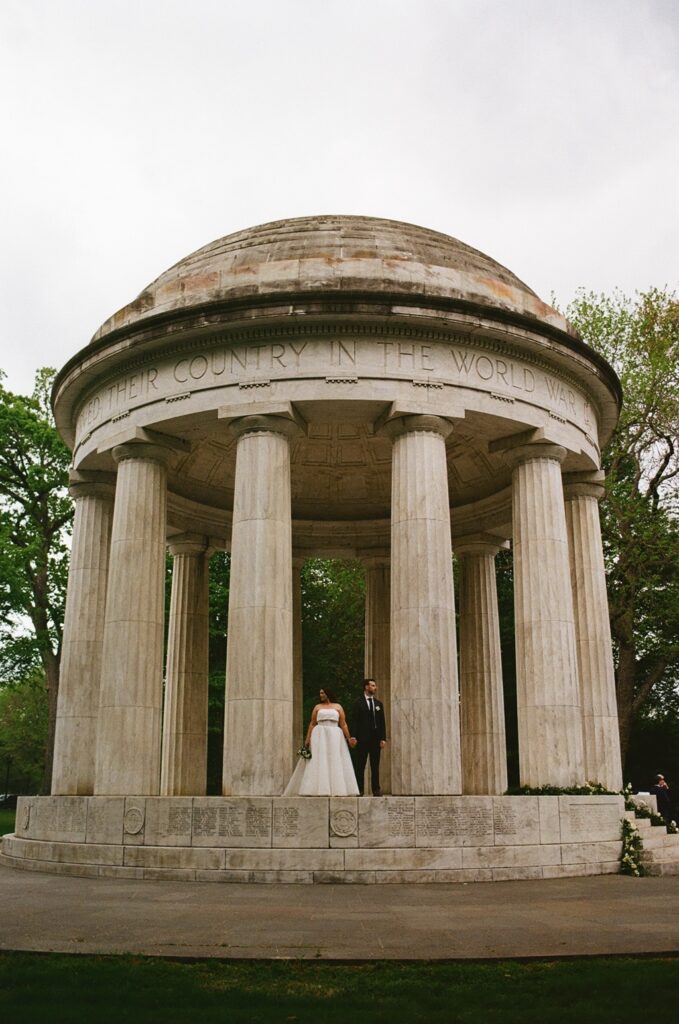
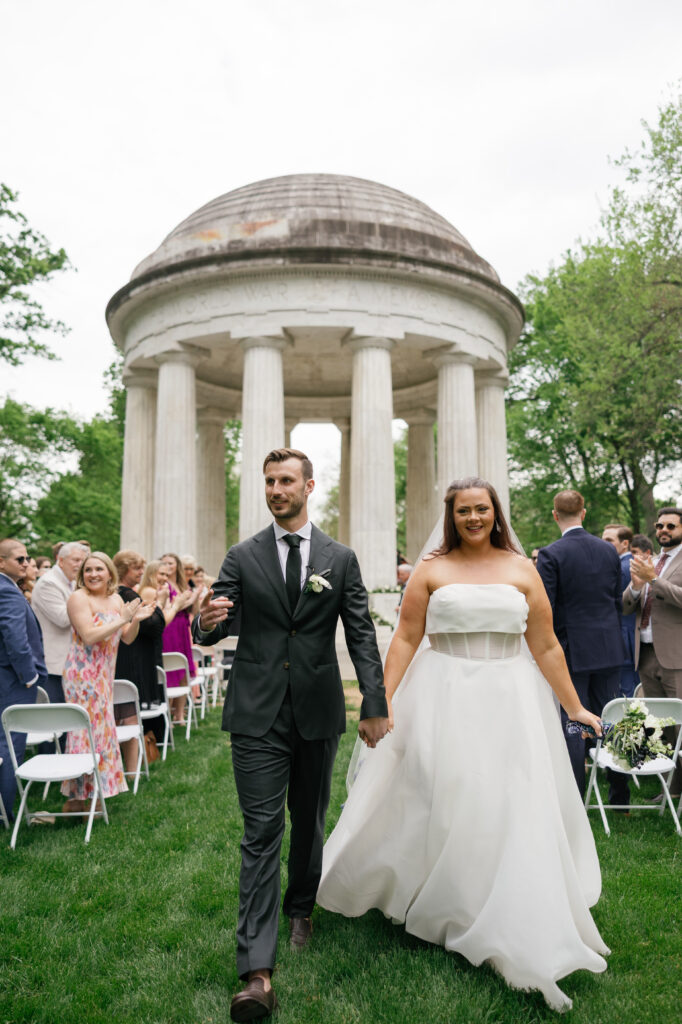
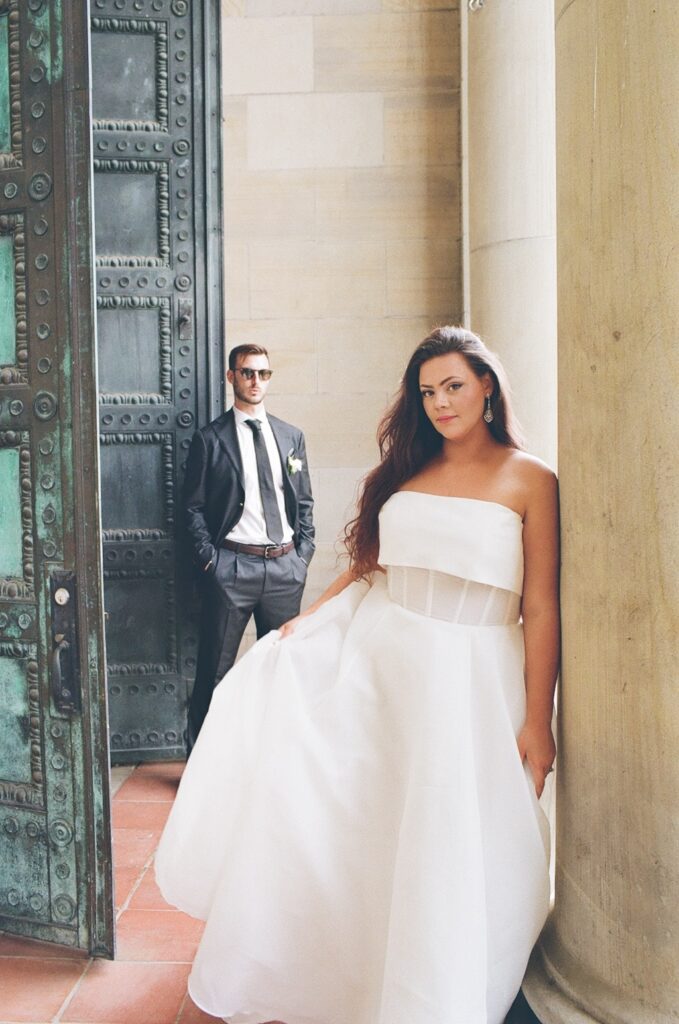
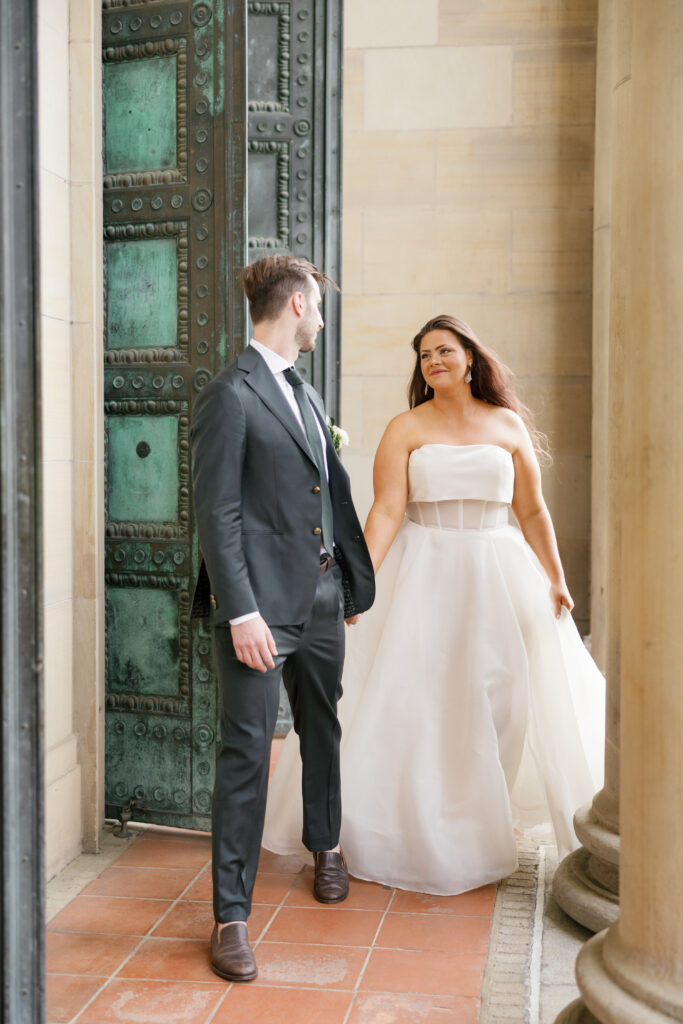
When people ask about film vs digital wedding photography, I tell them: the magic is in the mix. A hybrid approach allows me to honor your story with both intention and spontaneity, softness and clarity. It’s more work, more planning, and more care—but the result is a gallery that looks and feels like your day from every angle. Ready to experience both beauty and depth in your wedding photos? Let’s talk.
Meet Jalisa
DC Film Wedding Photographer
Jalisa is a documentary wedding photographer who passionately preserves weddings on digital and film.
Serving Washington, DC, Baltimore, Maryland, and beyond.
